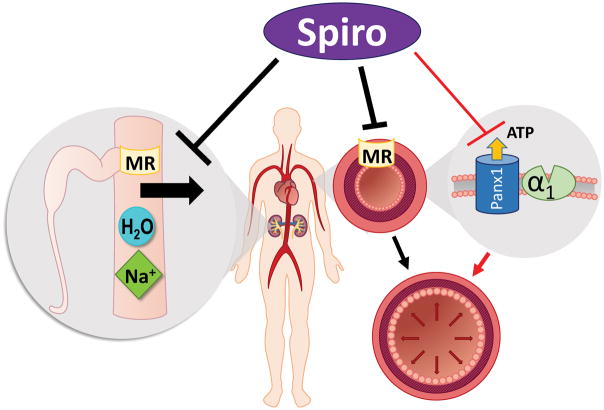Fig. 1.
Multiple proposed actions of spironolactone (spiro) to lower blood pressure. The primary target is the mineralocorticoid receptor (MR) in the kidney which reduces sodium re-uptake from the distal tubule lumen causing increased sodium and water excretion (left). More recently MR inhibition in the vasculature is increasingly recognized to reduce vasoconstriction (middle), but has also been associated with additional benefits including e.g. anti-inflammatory and anti-fibrotic effects not depicted in the scheme. The new pathway proposed by Good et al. is marked with red arrows (right). Spironolactone blocks pannexin channels (Panx1) in SMCs which reduces ATP release during alpha adrenergic stimulation (α1). This subsequently diminishes alpha adrenergic vasoconstriction resulting in lower vascular tone.

